I made this belt for my friend Anne, to go with her early 15th century houppelande – a triumph of making much from little.
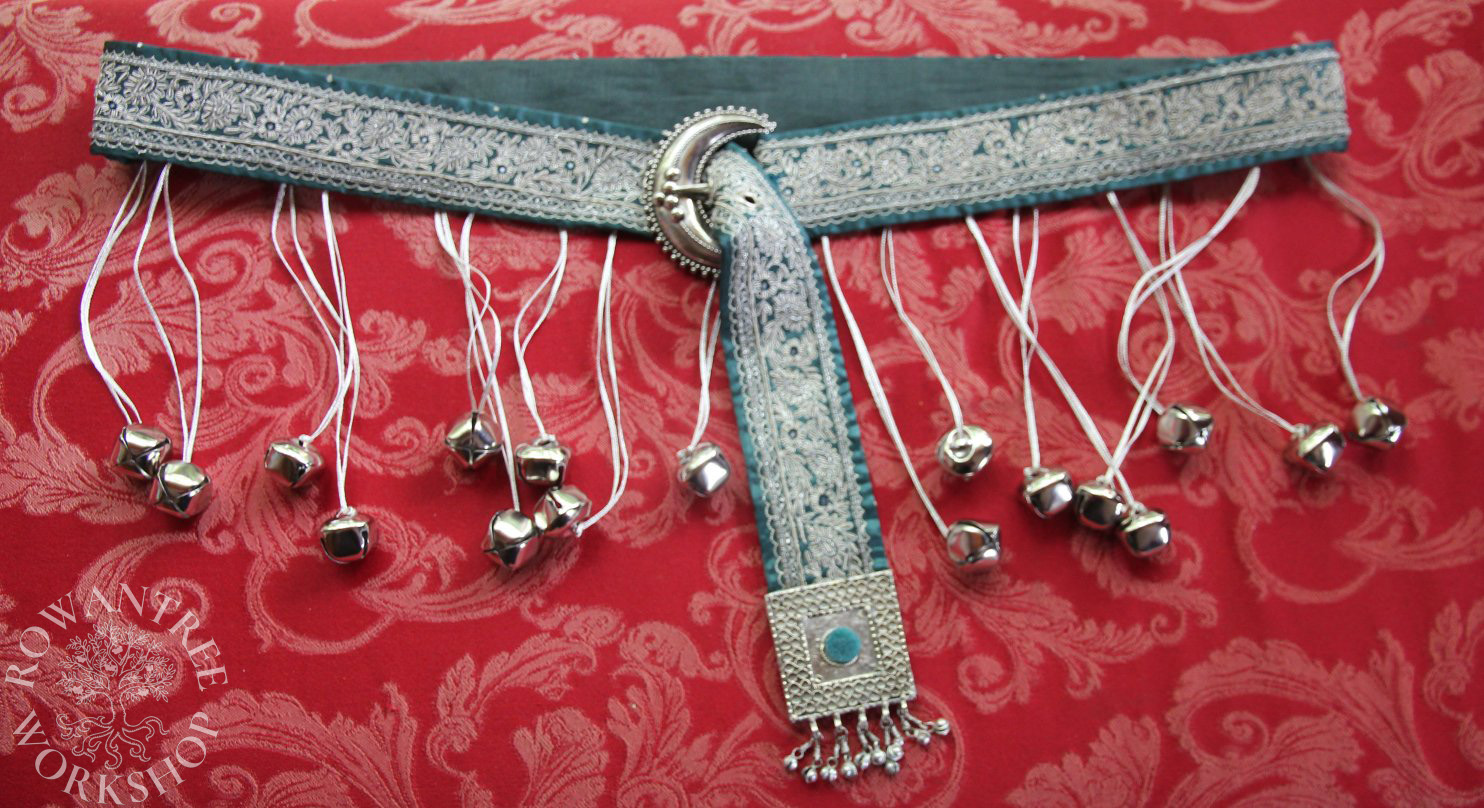
Research and Design
Ornate belts were common in the early 15th century for both men and women, and there are several images of belts with bells or tassels suspended from chains. These belts are typically quite wide, with heavily decorated surfaces and ornate buckles.
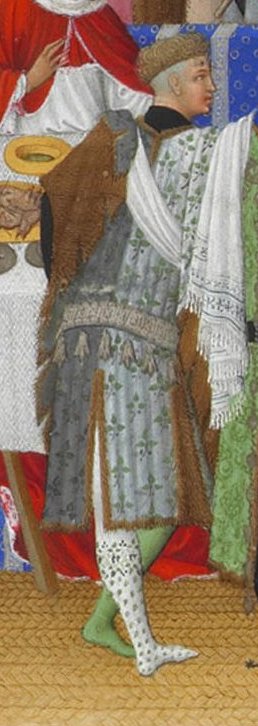
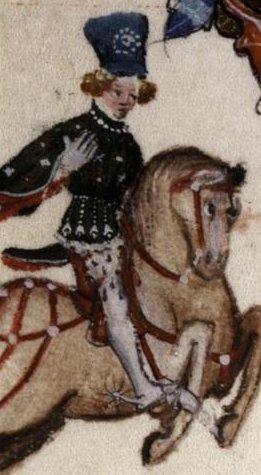
Source: Wikimedia
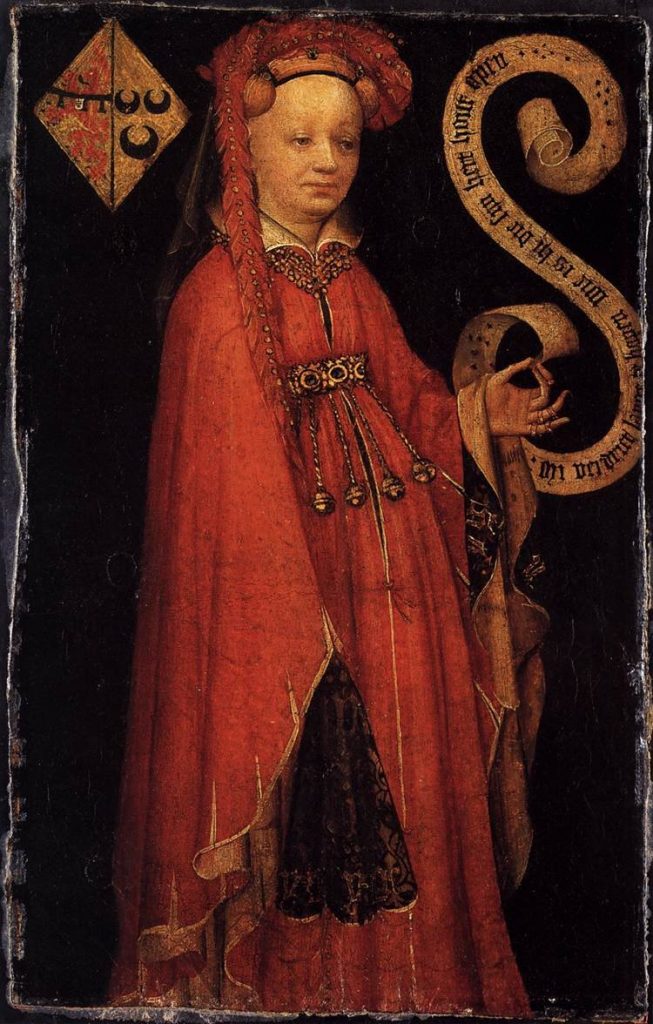
Construction
I made the base of the belt with several layers of hair canvas, channel stitched together for strength. I covered the outside in a strip of heavily embroidered sari braid (from a friend’s stash), and lined it in matching silk (and failed to take any progress pictures).
The ideal buckle would be an ornate tall D buckle, fitted with a buckle plate, and a matching chape. I had a reasonable buckle, but no suitable metal for a buckle plate, so I simply wrapped the end over the buckle prong and stitched it securely.
I added silver eyelets along the belt, and suspended silver bells on woven silver braid. Chains would have been a more historically correct approach, but Anne wanted to be able to cut the bells off to give them away.
Finally, I re-purposed an old Indian silver plaque as a belt chape, with a ‘jewel’ cut from a glass mosaic tile. The plaque came complete with baby bells – I simply cut off the large loops and drilled several sets of small holes, so I could sew it to the belt.
The end result looked suitably rich… (I also made her padded roll escoffion)
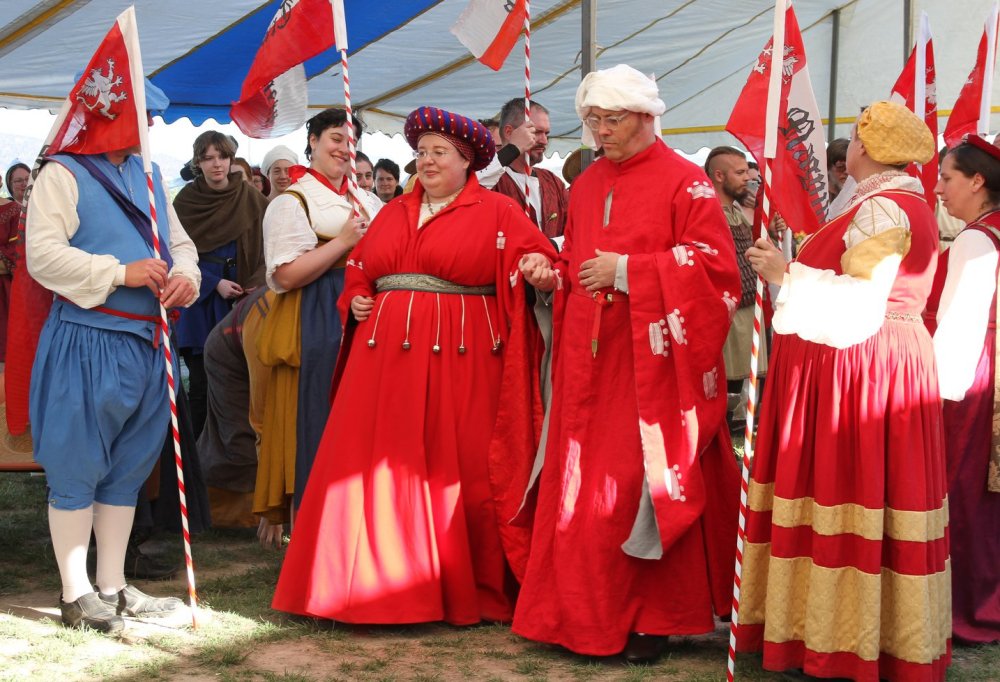
Afterthoughts
If I was making this belt again, I would do many things differently.
- Use 3mm leather as the base, rather than canvas, to hold the shape better
- Find something to make into a buckle plate – it really adds so much
- Use chains for the bells, as per the historic examples (maybe sewn on for easy removal).

